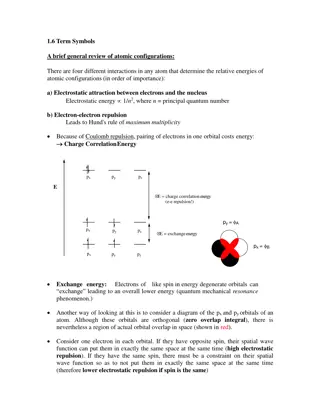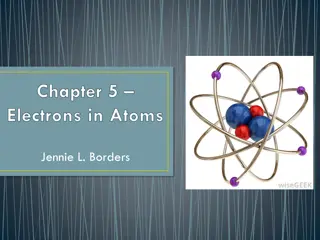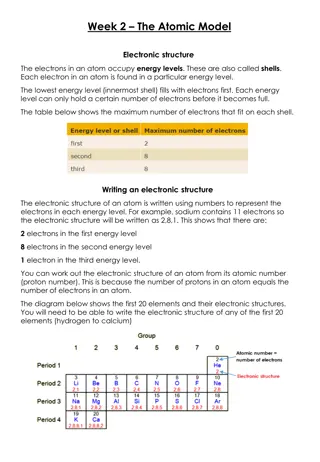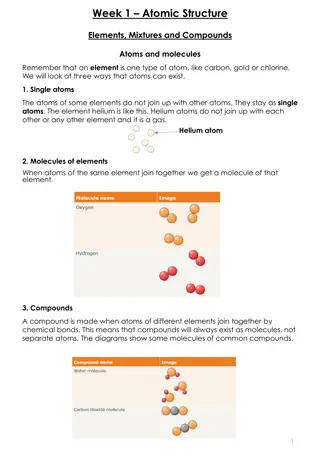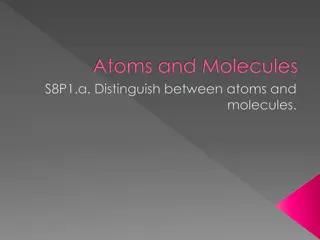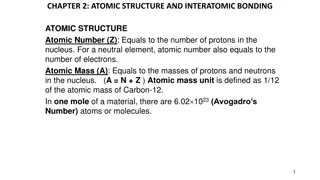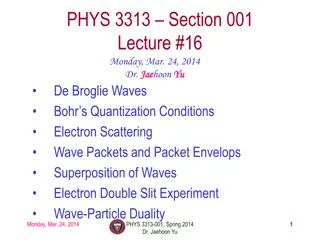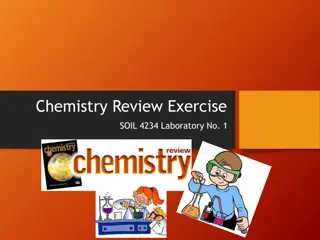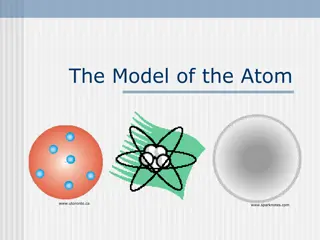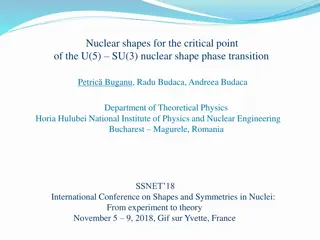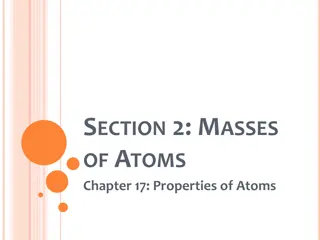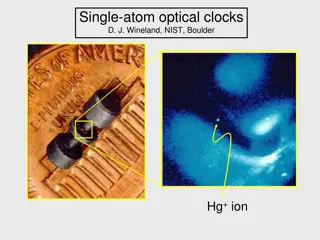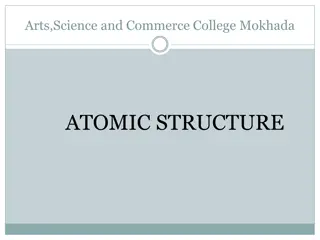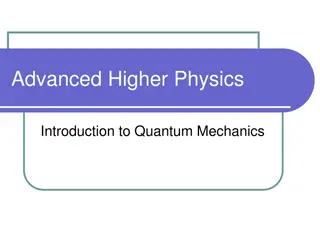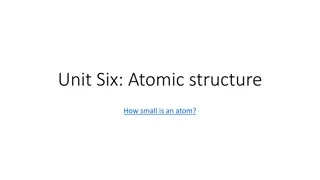
Challenge: Atomic Structure of Copper 65 and Bohr Model Overview
Explore the atomic structure of Copper 65 by determining the number of protons, neutrons, and electrons, as well as the atomic number and mass number. Additionally, review the Bohr model and its application in understanding atomic structure and electron configurations. Get ready to dive into the world of atomic models and quantum mechanics in this engaging chemistry challenge.
Download Presentation

Please find below an Image/Link to download the presentation.
The content on the website is provided AS IS for your information and personal use only. It may not be sold, licensed, or shared on other websites without obtaining consent from the author. If you encounter any issues during the download, it is possible that the publisher has removed the file from their server.
You are allowed to download the files provided on this website for personal or commercial use, subject to the condition that they are used lawfully. All files are the property of their respective owners.
The content on the website is provided AS IS for your information and personal use only. It may not be sold, licensed, or shared on other websites without obtaining consent from the author.
E N D
Presentation Transcript
Chemistry Jan 6, 2020 P3 Challenge- Determine the number of a) protons, b) neutrons and c) electrons present in an atom of Copper 65. Then state the d) atomic number and the e) mass number. Objective Atomic Structure Get out your colored periodic table. You will need it today. New ones are available if you need.
Chemistry Jan 6, 2020 Objective Atomic Structure / Bohr Model Agenda Atomic Structure overview Assignment: Bohr Model Worksheet Bohr Model Valence and Core electrons
Review Atomic models Recall the Nuclear model and where subatomic particles are located Recall the Bohr model that uses quantized orbits Recall Quantum Mechanics that uses quantized orbitals Orbitals that we draw represent a 95% probability of finding an electron in that space. Any single orbital can contain up to two electrons (0, 1, or 2)
Bohr Model Based on x ray spectra line data Electrons located in nested shells located in specific quantized orbits Shells given labels from Xray spectra: K, L, M, N. Each shell can hold only a given number of electrons: K 2 electrons L 8 electrons M 8 /18 electrons (up to Ca it s 8) N 18 / 32 electrons (up to Sr it s 18) The build an atom app used an unlabeled Bohr model.
Example Draw the Bohr model for the most abundant isotope of Phosphorus. From Periodic Table Z = Gives #p and #e for neutral atom. Find most abundant isotope mass number, A = on list of abundances. A Z Determine #n. Draw a nucleus for the neutrons and protons. Label. Draw a circle around the nucleus for K. Place up to 2 electrons on this orbit. Draw a circle around K for L. Place up to 8 electrons on this orbit. Continue with M and/or N with 18, and 32 electrons, until all electrons used.
Valence Electrons / Core Electrons Valence electrons located in the shell with the highest energy level. All other electrons are core electrons. #Valence electrons varies from 1 to 8 with a completed octet most stable 2 valence electrons Highest Energy = 2 4 valence electrons Ex: Mg Highest Energy = 3 Ex: C Number of valence electrons will always match the group A number. Atoms with the same number of valence electrons, that is, elements in the same A group, will have similar reactivity.
Periods Groups 1A 2A 3A 4A 5A 6A 7A 8A 1-7 Rows Columns 1-18 1-8 A / B A = main group elements Alkali metals Alkaline earth metals Transition metals Other metals Semimetals Halogens Noble gases Other Nonmetals Lanthanides Actinides Division line 1 2 3 3B 4B 5B 6B 7B 8B 8B 8B 1B 2B 4 5 6 7
Exit Slip - Homework Exit Slip: Draw the Bohr Model for Oxygen-16. State the number of valence. What s Due? (Pending assignments to complete.) Bohr Model Worksheet What s Next? (How to prepare for the next day) Read Holt p84 - 88

